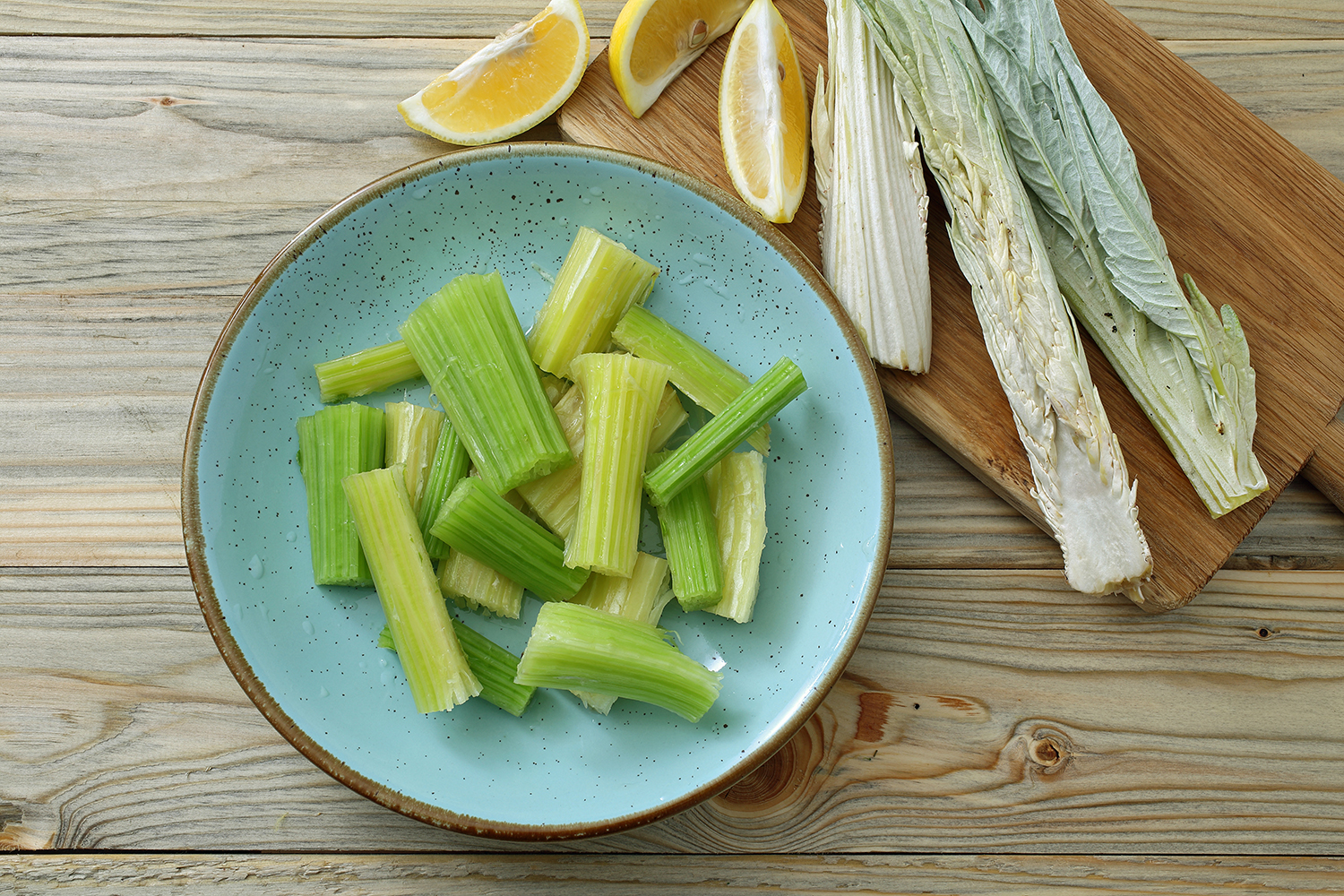Cardoon: fool proof recipes
We show you how to cook cardoon, a typical food that can be made in the style of Aragon, Navarre, Rioja. Take advantage of making it before the warm weather comes.
fresh food
Share

The cardoon is a vegetable from the Asteraceae family, like artichokes, endives or lettuces. It is a vegetable which is typical of the cold months, from the end of October until the start of spring, although you can also find it tinned for the rest of the year. Not to be confused with borage or chard stalks with which it shares some similarities. The edible part of the cardoon is the stalk or the stem, in other words, the white part. This has a slightly bitter flavour due to the cynarine.
The plant originates from the Mediterranean, where it started to grow in the wild, until they began to cultivate it in Spain, Italy and France. In our country, the production of cardoons takes place, mostly, in Navarre, Zaragoza, La Rioja, Catalonia and the Valencian Community. Cardoons are also highly regarded in central European countries.
Benefits of cardoon
This vegetable is a great ally to health due to the fact that it is a source of fibre and folic acid, which contributes to the normal working of the immune system. It also contains potassium, favouring the maintenance of normal blood pressure. It favours digestion, helps to regulate cholesterol levels, contributes to strengthening intestinal flora, it is rich in water and low in calories.
How do you cook cardoons?
When buying cardoon, it is important to check the stalks are firm and their colour is a creamy white, that they don’t have holes or stains and their leaves are green and fresh. Before cooking cardoons, they should be washed. To do so, use a knife to cut the hard partsthat wrap around the base of the stalk until you reach the part which is juicy and green-whitish in colour and remove the strands. Remove the leaves and cut them into chunks of 5 centimetres. Drizzle with lemon juice so they don’t oxidise or darken. To prevent them from losing their nutrients, it is advisable not to cook the stems for too long.

Cardoon recipes:
There are an infinite number of cardoon recipes. Each region has its own way of making it, although the most common is to cook it with salt and a dash of lemon. It can also be roasted in the oven, sautéed or coated in batter or even accompanied by a sauce.
Cardoon with almond sauce
Ingredients (4 people)
- 500g fresh, frozen or tinned cardoons
- 50g pine nuts
- 30g chopped Serrano ham
- 3 cloves of garlic
- 2 teaspoons of wheat or corn flour
- A handful of raw almonds
- Freshly ground salt and black pepper (to taste)
- Extra virgin olive oil
Method
- If the cardoon is fresh, clean the strands well and cut the hardest parts of the stalk. Cut into chunks and immerse in water with a dash of lemon so it doesn’t turn black.
2. Cook the cardoon in plenty of water with salt for 20-25 minutes until it is soft (prod one of the stalks with a knife to check). Remove the cardoon from the water and keep the water from cooking.
3. In a frying pan with oil, fry the chopped garlic, add the ham, sauté and add the flour and sauté for another few minutes. Add a ladle of the cooking water and stir until it thickens.
4. Crush the almonds and add some of the stock to them when crushed. Add this to the frying pan with the sauté, add a little salt and mix together. Cook for one minute. If the sauce is very thick, add a little more stock.
5. Place the cardoon in the sauce and leave the sauce to reduce (for approximately five minutes).
6. Serve.
Cardoon with clams
Ingredients (4 people)
- 500g cooked cardoons
- 300g clams
- 20g flour
- 150 ml fish stock
- 100 ml white wine
- 4 cloves of garlic
- Olive oil
- 1 handful of fresh parsley
Method
- Wash the cardoons well and chop them.
2. Cook the stalks in boiling water with salt and a dash of lemon for one hour. Remove the cardoon and keep the water from cooking.
3. Sauté the chopped garlic with olive oil and add the clams. Add the flour, white wine and cooking water and leave the clams to open up.
4. Add the cardoon and stir so it all mixes together.
5. Serve with a little chopped parsley on top.






